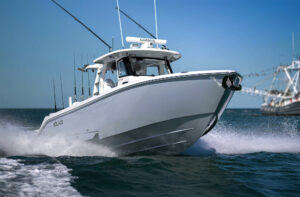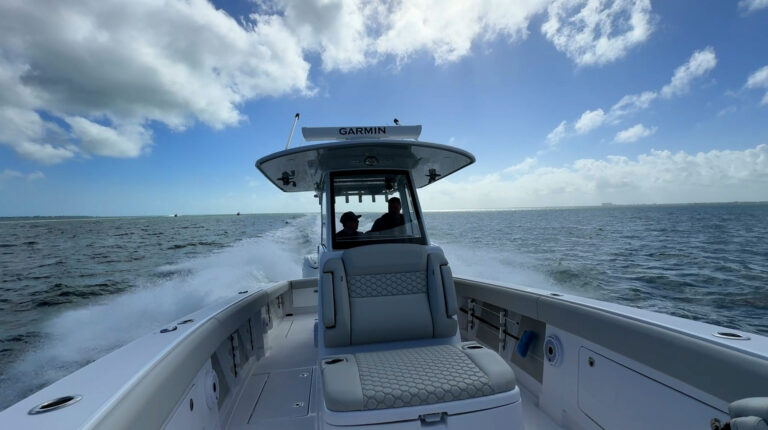When it comes to sportfishing, the names are legendary: Michael Lerner, Ernest Hemingway, Zane Grey, and Van Campen Heilner. But in 1897—a year before Hemingway was born, while Lerner and Heilner were still learning their ABCs, and Grey was just entering his mid-20s—enthusiastic angler, naturalist, and Massachusetts native Charles Frederick Holder was un-locking the door to big-game sportfishing for them and for millions of other fishermen, too.
Holder, a 1998 International Game Fish Association (IGFA) Hall of Fame inductee, followed Horace Greeley’s recommended “Go West…” path all the way to the Pacific. And 110 years ago he battled a fish that would launch a worldwide passion for catching pelagics. He would also, along with several fishing friends, co-found the famous Avalon Tuna Club, which remains active to this day.
Holder started off to the City of Angels during the latter half of the 1880’s in the hopes that California’s dry climate air would help alleviate a pulmonary disorder. On the cusp of a new century, the transcontinental railroad brought masses to this untamed shore and eventually him to the largest catch he’d ever encountered. The young Holder, who had worked as a collector for New York’s Natural History Museum, was keen to investigate the virtually untouched waters off nearby Catalina Island. Steam-powered boats enabled adventurers like Holder to quickly make the 26-mile jaunt to Catalina where they could see human-size thunnus (bluefin tuna, also called leaping tuna) feeding on baitfish. Their size fascinated him. He’d experienced the East Coast’s big game of the day, of which his largest catch had been a tarpon, and while a sizeable game fish, it was nothing like the torpedo-like, blitzing bluefin tuna.

Charles Holder with the first tuna caught on rod and reel.
Holder also experienced the results of overfishing by many shore-based anglers who utilized hand lines to target game such as the tasty yellowtail and white sea bass. This troubled him, as he believed in giving a fish a sporting chance to win its freedom. In fact, later, during the formation of the Avalon Tuna Club, he and his peers developed rules for proper tackle and techniques for rod-and-reel fishing. These would include leader length and line classes, rules that would be adopted by the IGFA when it formed several decades later.
Holder was determined to figure out how to catch a tuna, which would prove to be a daunting task. His repeated attempts to snag the smaller yellowtail on rod and reel eventually yielded positive results, but the larger leaping tuna eluded him. Perhaps that’s not so surprising when you consider that the battlewagons of the day weren’t diesel-powered, fiberglass behemoths but rather small, sail- and arm-powered wooden yawls and rowboats and that the tackle consisted of linen line and drag systems that amounted to pressing your thumb against leather backing that was supposed to prevent the spinning line from literally burning your finger to the bone. According to the Avalon Tuna Club’s Web site, many early anglers broke fingers, hands, and other appendages attempting to catch fish on overmatched tackle. (If you have ever dropped back on a large pelagic, you know the speed and strength with which it can dump a modern two-speed, heavy-drag reel is mind-blowing, so the challenge for Holder must’ve been Everest-like in proportion.)
Despite the mammoth challenge, the man from Massachusetts finally put the wood to a 183-pound leaping tuna from a yawl in early June 1897, perhaps while Hemingway was having a lullaby sung to him in the womb, Heilner and Lerner were doing their homework, and Grey was working on his first book about the untamed West. Holder described the epic battle in his 1912 book The Fishes of the Pacific Coast:
I had a strike which took nearly all of the six hundred feet of line. I think it was stopped at five hundred fifty feet. It then began to tow the heavy yawl to the northeast, directly up the island, having been hooked off Avalon…I made a desperate effort to stop the fish, but its fierce rushes, its downward plunge gave me the fight of my life, and, at the end of an hour, I appreciated the fact I was weaker, and the fish seemingly growing stronger…I had to give line or swamp; in fact one big sea nearly swamped us and “Jim” had to drop the oars and take the bailer, while I held the rod in my left hand and bailed with the other watching the sea and the tip…At times I could not turn the handle of the reel, could not make an inch, could only press my half-paralyzed thumb on the leather brake and hold onto the rod.

Avalon, California, would soon become a big-game mecca.
After nearly four hours of pitched battle and an almost 12-mile tow courtesy of the tuna, Holder’s fish finally came to the gaff. It was this tuna that would launch the angler and his cohorts to found the club (guess who its first member was?), which required an angler to catch a tuna weighing more than 100 pounds to qualify for membership. Many adventurous fishermen, including Grey (who caught a 582-pound, world-record broadbill swordfish off Catalina in 1926), boarded the train to California to see these giant fish. And all tried their luck at catching one in the hopes of becoming a member of this exclusive organization.
Holder’s big-fish record was broken within 12 months by a 200-plus-pounder. In fact, he never caught another record fish. But without his boldness and fascination with all things fishing, that 200-pound-class tuna may never have been. While Holder’s name has faded over time, it should not be a footnote in fishing history, since he is the man who opened the door for the rest of us.
This article originally appeared in the May 2007 issue of Power & Motoryacht magazine.










